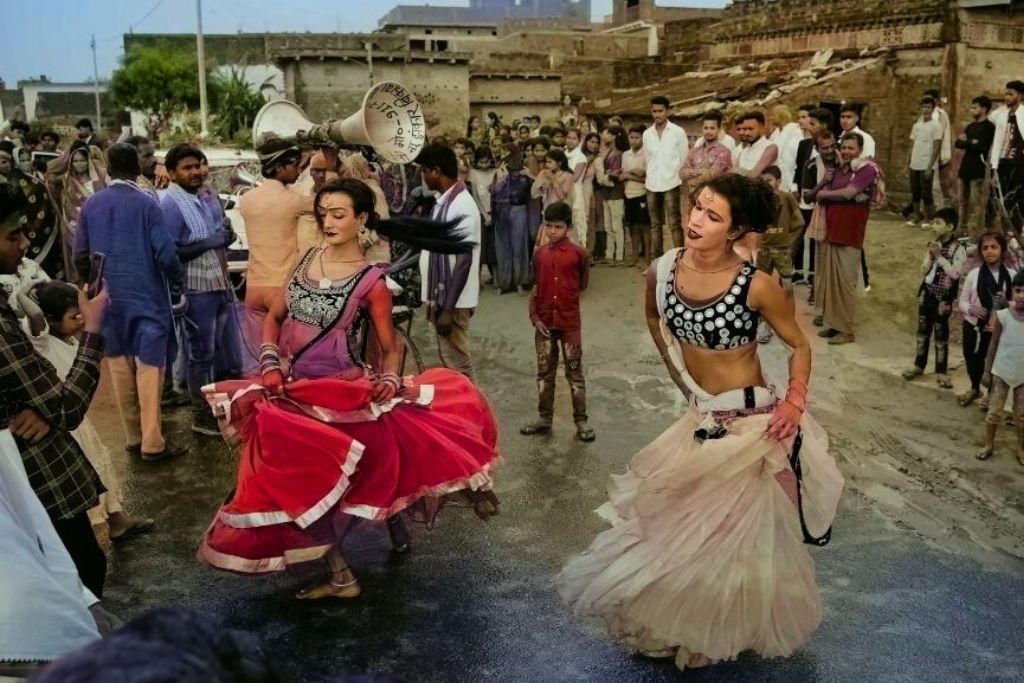
How the decline of launda naach has impacted the queer community
Launda naach, practised in Bihar and Uttar Pradesh, dates back to when women, barred from dancing in public, were replaced by effeminately dressed men. Kajal Bhabhua, a trans performer, says the dance form is fading now.
Kajal and her friend get ready, applying makeup for a launda naach performance at a wedding in the Bhabua region of Bihar. This unique art form involves men, trans women, and trans men dressing up as women to dance at weddings and religious festivals.
Launda naach is a blend of music, dance, humour, dialogues and melodrama. The performers portray various characters, depicting a wide range of emotions and everyday life scenarios. In this picture, a transgender artiste is applying dramatic eye makeup ahead of a performance.
Kajal has been performing launda naach for 14 years in a small town in Bihar. She is famous in her town, Bhabua, and people call her Kajal Bhabua. For her, launda naach is not just a tradition but also a means of livelihood. Despite the changing times and the emergence of new entertainment forms, launda naach remains a vibrant part of cultural celebrations in these places.
Kajal (left) and her friend pose before the camera ahead of a performance at a wedding. They are dressed up and ready for the show. Launda naach is believed to date back to the 11th century. At that time, women were not allowed to dance in public and could only perform in temples or for feudal lords. To entertain the general public, men would dress as women and perform, creating a tradition that has lasted for centuries.
Many artistes, including Kajal, perform in public places with a variety of musical instruments. People enjoy their performance during wedding and even haldi ceremonies.
Being a transgender person, Kajal has faced discrimination from her family and society. Launda naach is her only source of income, but the decline of the art form is severely impacting the transgender community in Bihar and Uttar Pradesh. Traditionally, this art form provided a rare and respectable livelihood for many trans individuals, who otherwise face limited opportunities. With the fading popularity of launda naach, many are now being forced into marginalised roles like sex work or begging.
Kajal and her friend carry their bags to another location for a performance. During the wedding season, these artistes earn a good amount of money.
The lead image shows Kajal (right), a 34-year-old trans launda naach performer, and a co-artiste, entertaining a crowd with their performance. They attract a large number of people, including children and adults, who watch it during wedding celebrations.
Text and photos by Suhail Bhat, a Village Square Fellow 2023-24. He works as a multimedia journalist in Kashmir.






